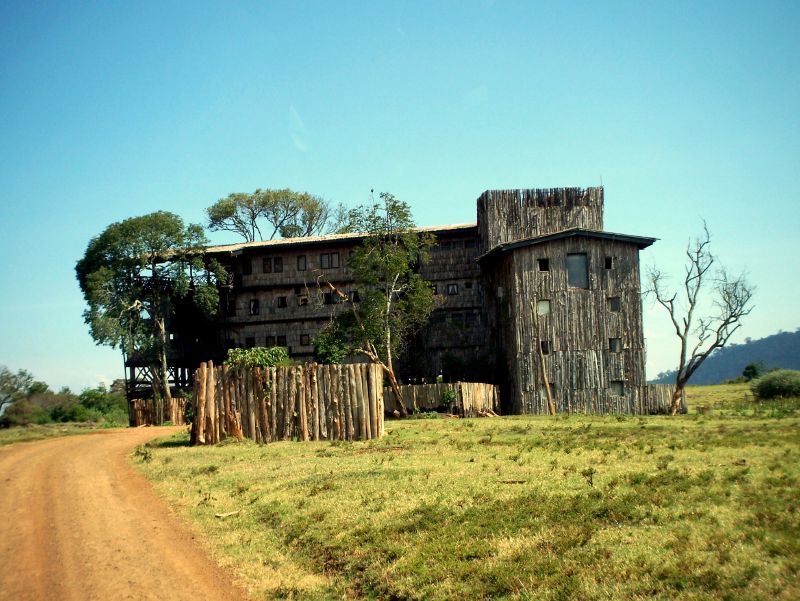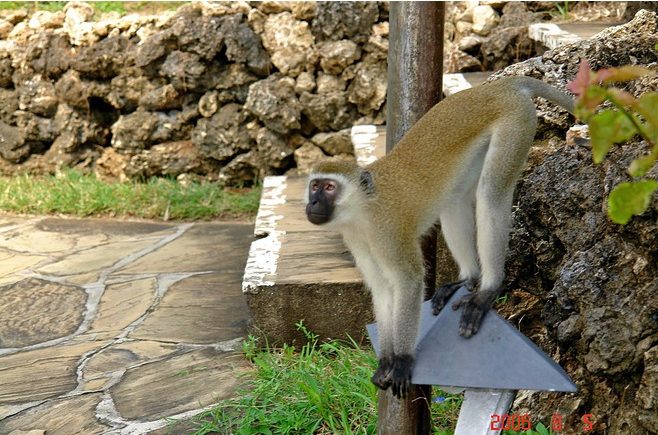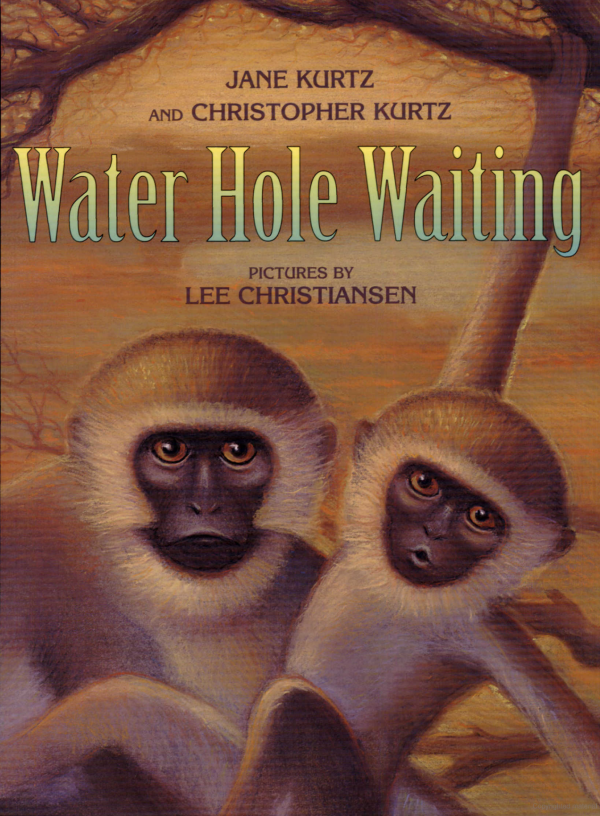Water Hole Waiting
By Jane Kurtz and Christopher Kurtz
Illustrated by Lee Christiansen
Greenwillow Books, 2002
32 pages
Ages 8 and up
ISBN: 978-0-060-56493-3
Waiting is hard. And if you are a small vervet monkey with a big thirst, it’s even harder. But wait you must, because snap! go Crocodile’s jaws; slip, slap go Lion’s powerful paws; thrum, thrum go the rumbling elephants … Water holes on the African savanna are popular places. Will Monkey and his family ever get to drink? Take this unforgettable (and noisy!) armchair safari and find out! It’s the perfect book for animal lovers, and Lee Christiansen’s lush and expressive pastel portraits of the animals take you right to the water hole. Also includes an informative authors’ note on the facts behind the fiction.
Jane Kurtz and her brother Christopher Kurtz previously collaborated on Only a Pigeon. Both authors live with their families in Portland, Oregon.
Reviews
School Library Journal called the illustrations breathtaking while Kirkus Reviews noted the vivid artwork complements the elegant text, often extending it with additional details.
Water Hole Waiting was named a School Library Journal Best Book and a National Science Teachers Association/Children’s Book Council Outstanding Science Trade Book.
“This is a must for studies of African animals or the savanna biome, and a gem for writing teachers.”
Classroom Resources
- Read the book’s text (before sharing Lee Christiansen’s illustrations) and ask students to choose a scene they would like to illustrate. Compare the children’s illustrations to the images created by the illustrator.
- To learn more about some of the animals that come to the waterhole read: African Animals by Caroline Arnold (Morrow, 1997). Arnold includes pictures and brief descriptions of many of the animals that are included in Water Hole Waiting
- Compare and contrast the fate of the zebra in Deborah Chandra’s Who Comes? (illustrated by Katie Lee [Sierra Club Books for Children, 1995]). In Chandra’s book, “Someone comes to the waterhole, glistening in the evening sun, to cool his paws and wet his tongue. Who comes? Who?” It’s a lion, providing tension for each other animal that comes to drink. In Water Hole Waiting, “Zebra is one moment quicker than death.” In Chandra’s book the zebra is not as quick.
- When Jane’s and Chris’s editor at Greenwillow decided to publish Water Hole Waiting she also asked some questions about the monkey in the story. Jane and Chris set out to research the type of monkey that would have been in the Savannah. Read more about the authors’ research below.
- At one point, when Jane read about vervet monkeys living in “fever trees.” The phrase thrilled her because it reminded her of one of her favorite childhood stories, “The Elephant’s Child” by Rudyard Kipling. In that story, Kipling wrote about the Great Limpopo River all set about with fever trees. Learn more about fever trees below.
What Is a Water Hole?
Animals at the Water Hole
Water holes are often found in Africa and in the outback of Australia, and in South America. The animals that come to the water hole to drink are, of course, different depending on where the water hole exists. In the outback of Australia there might be kangaroos or koalas. In the Amazon jungle there might be anteaters, spider monkeys, and perhaps even a toucan. In Kenya, at the water hole Jane Kurtz and co-author Christopher Kurtz write about in Water Hole Waiting there are elephants, lions, hippopotami, giraffes, vervet monkeys, and a crocodile.
The seasons change the activity at a water hole. During the dry seasons when there is no rainfall a water hole may dry up. During those periods of time animals and birds become thirsty and must migrate to where there is new water and food. During dry seasons, the grass also become dry and the soil becomes dry and hard as well.
When rain returns the grass returns to its green color and the water holes fill, becoming bigger and deeper. The animals and birds then return to the water hole area waiting their turn to drink.
What Is a Water Hole?
During the wet season, a low point in the ground fills with water, providing water for the animals and birds of the area. The size of the low point determines the size of the water hole. Tiny animals might drink from holes made with the impression of an elephant’s foot. Some holes might be just a few feet wide, others several dozen feet across. These water holes are filled with rains. Other water holes are always filled. These are the holes that are as big as a pond or even a small lake and are fed by an underground spring.
Other Books About Water Holes
Besides Water Hole Waiting by Jane Kurtz and Christopher Kurtz which focuses on an African (Kenya) water hole, author and illustrator Graeme Base has written and illustrated a book about a water hole in Australia. In his book, The Water Hole (Harry N. Abrams, 2001), more and more animals visit a water hole and when they do, the size of the water shrinks until the water hole completely disappears. Base is known for the hidden pictures and meanings in each of his illustrations so be sure to look carefully at each of the illustrations in his book.
Animals at the Water Hole
You might be interested in reading these books or visiting these websites about animals that might be found at the water hole. Wihle animals seek out watering holes, the people of Africa are seeking out water too. There are many initiatives to bring clean water to the people of Africa.
- Ark in Kenya — watch the water hole — Cameras capture the images of animals visiting an African water hole.
- The Water Project – Bringing Water to Africa
- Water for Africa
- Water Wells for Africa
Research Notes
From Jane: When my editor at Greenwillow decided she wanted to publish Water Hole Waiting, she told us that she was fascinated with the nonfiction part of the book–the fact that the story does show how animals behave on the savanna. She asked us what specific kind of monkey the young monkey in the story would be. She also asked if it were possible for monkeys on the savanna during dry season to go all day without a drink.
- Vervet Monkeys — We very quickly knew that the monkeys would be vervet monkeys, so Chris and I looked at many different web pages to learn more about vervet behavior—including sites similar to these
-
- Interesting vervet faces and expressions – Vervet Monkey Foundation
- South African Venues – Vervet Monkeys – Vervet Monkey, South Africa Explored.
- Vervet Monkey – African Wildlife Foundation
- Vervet Monkey Facts – Out of Africa
- Primate Factsheets: Vervet – Primate Info Net: National Primate Research Center, University of Wisconsin – Madison
- Vervet Monkey (Chlorocebus pygerythrus) – Animals – A-Z Animals- Animal Facts, Information, Pictures, Videos, Resources and Links
- I also read a big, thick book: How Monkeys See the World* to learn more about the way vervet monkeys give danger signals to each other, and had e-mail conversations with Dr. Lynne A. Isbell of the University of California at Davis, who studies vervet monkeys in Kenya.
-
* (Cheney, Dorothy L. How Monkeys See the World: Inside the Mind of Another Species by Dorothy L. Cheney and Robert M. Seyfarth. Chicago: University of Chicago Press, 1990. 377 pages)
Fever Trees
Jane and Christopher were working on Water Hole Waiting when Jane visited Kenya in 2000. She wanted to see a water hole. These are her brief comments about that trip to the water hole.
In the spring of 2000, my daughter, Rebekah, was living in Kenya and going to school, so the two of us took a trip to Tree Tops, a famous water hole in Kenya where Queen Elizabeth was staying when she got the news that her father had died and she was the new queen of England. The lodge is still built around a tree but it’s bigger than when Queen Elizabeth was there.
Guests can’t go outside. They stay inside and watch the animals from their rooms or from special viewing rooms. Just as I remembered, the animals seemed to take turns–elephants wandering off, water buffalo arriving. In the middle of the night, a buzzer rang in our room to tell us that a rhino was at the water hole in case we wanted to take a look.
In 2001, my family visited Kenya again. Vervet monkeys scamper around the hotels in Mombassa.
Later, my son and daughter visited a game park near Nairobi. Vervet monkeys are animals in this park.
Visit and view the live webcam at the Ark in Kenya—watch the water hole.


Frequently Asked Questions
Jane and Christopher were working on Water Hole Waiting when Jane visited Kenya in 2000. She wanted to see a water hole. These are her brief comments about that trip to the water hole.
In the spring of 2000, my daughter, Rebekah, was living in Kenya and going to school, so the two of us took a trip to Tree Tops, a famous water hole in Kenya where Queen Elizabeth was staying when she got the news that her father had died and she was the new queen of England. The lodge is still built around a tree but it’s bigger than when Queen Elizabeth was there.
Guests can’t go outside. They stay inside and watch the animals from their rooms or from special viewing rooms. Just as I remembered, the animals seemed to take turns–elephants wandering off, water buffalo arriving. In the middle of the night, a buzzer rang in our room to tell us that a rhino was at the water hole in case we wanted to take a look.
In 2001, my family visited Kenya again.Vervet monkeys scamper around the hotels in Mombassa.
Later, my son and daughter visited a game park near Nairobi. Vervet monkeys are animals in this park.
Visit and view the live webcam at the Ark in Kenya — watch the water hole.
